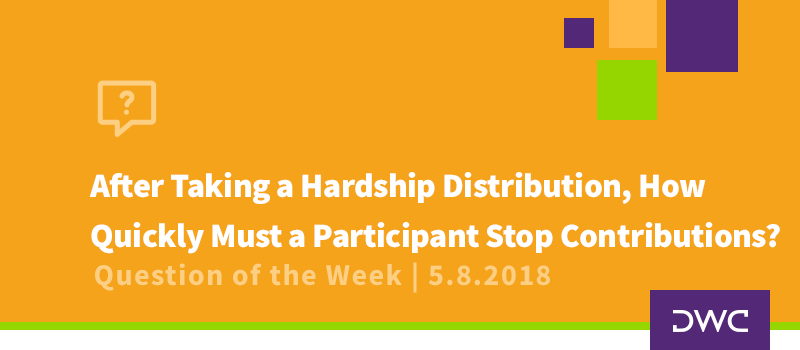Catching Up On Catch-Up Contributions, Part 3 – Return of the Plan Correction
Congratulations, you’ve made it to the third and final episode of our trilogy on the proposed catch-up contribution regulations that address changes made by SECURE 2.0 (S2). In part 1, we discuss the increased contribution limit for those age 60 – 63. Part 2 digs into the requirement that certain higher paid participants must make any catch-up contributions as Roth.
Here, we take a look at what happens when catch-ups that should be Roth are made as pre-tax. We’ll refer to those as erroneous contributions. We’ll wrap up with a couple of other miscellaneous details.
Correction Methods
The proposed regulations describe three “R” options to correct erroneous contributions.
- Refund
- Recharacterize
- Rollover
All are pretty straight-forward. Let’s take a quick look at each.
Refund
This is really as simple as adjusting the principal amount of the contributions made in error for investment gains or losses and distributing that total amount to the participant. The plan issues a Form 1099-R after year-end, and the refunded amount is taxable to the participant in the year of distribution.
Recharacterize
This is one of two new correction options in the proposed regulations. There are 3 easy steps.
- Adjust the errant pre-tax contributions for investment gains/losses.
- Transfer that total to a Roth account in the plan for the affected participant.
- Adjust the participant’s W-2 for the year of contribution to show the principal amount of the erroneous contributions as taxable. Note that the earnings amount is not included on the W-2.
Because this option involves the W-2, it is only available through the date on which W-2s are given to employees. The proposed regulations do not allow for corrected W-2s in this context.
Rollover
This second new option allows use of a plan’s in-plan Roth rollover provision to roll the erroneous contribution amount (adjusted for investment gains/losses) into a Roth rollover account within the plan. The plan must issue the participant a Form 1099-R showing the full amount of the rollover (including earnings) as taxable in the year in which the rollover occurs. Of course, the plan must include an in-plan Roth rollover provision to utilize this option. If that provision is missing, it’s easy enough to add via a plan amendment; however, it is important to note that some recordkeepers are not able to accommodate that provision, so be sure to check on that before proceeding.
There are a couple of quick caveats in order. First is that the proposed regs require sponsors to have practices and procedures in place at the time of the error in order to use either of the two new options. At a minimum, a plan must include a “deemed Roth election” in place to satisfy this requirement. We talk about that in Part 2 of this trilogy.
The second is that although all 3 correction options are generally available, a plan must use the same option for all similar failures in a given year. In other words, it is not acceptable to correct one failure via refund and another failure of the same type in the same year via recharacterization.
Correction Deadlines
We’ve covered the “how”, now we look at the “when”. It depends on the reason for the error.
Exceeding the Regular Deferral Limit
If the erroneous contributions are due to exceeding the regular deferral limit ($23,500 for 2025, indexed for inflation), the deadline to correct is April 15th following the close of the year of the excess. This post talks about the ramifications of not meeting that deadline, i.e. double taxation to the participant.
Exceeding the Overall Contribution Limit
The overall contribution limit, also referred to as the annual additions limit or 415 limit, is $70,000 for 2025 and is indexed for inflation. If the erroneous contribution is a result of exceeding this limit, the deadline to correct is 9 ½ months following the close of the year, which is October 15th for calendar year plans.
Failed ADP Test
When a 401(k) plan fails the ADP test, one of the options for correction is to recharacterize the amounts that would otherwise be refunded as catch-up contributions to the extent the participant has any available under the limit. Although the outside deadline to correct a failed ADP test is the end of the following plan year, correction by refund must take place no later than 2 ½ months following the close of the year (March 15th for calendar year plans) to avoid a 10% excise tax. If the erroneous contributions result from recharacterizing deferrals to fix a failed ADP test, the deadline to correct is that same 2 ½ months (March 15th).
Other Plan Imposed Limit
If the erroneous contributions occur due to exceeding a limit created by the plan’s design, the deadline to correct is the same as for a failed ADP test.
Avoiding Discrimination Issues
Previously, if a plan allowed catch-up contributions at all, it had to allow them equally for all participants who were at least age 50. That is called the universal availability requirement. More on that in a minute.
However, under these new rules, if a plan does not permit Roth contributions, it effectively imposes a $0 catch-up limit on those who earned $145,000 or more in the previous year. The catch here is that since the highly compensated employee pay threshold is $160,000, it is distinctly possible that some of those precluded from making catch-up contributions in this scenario would be non-HCEs, which is the group the nondiscrimination rules seek to protect. While this would also obviously preclude those who are HCEs based on pay from making catch-up contributions, it would not for those who are HCEs based on ownership (particularly ownership attributed from a family member). That combination could lead to a discriminatory result.
The proposed regulations acknowledge that possibility and specifically allow plans to exclude enough HCEs from making catch-up contributions if necessary to prevent that outcome.
Recapping the (Slightly Less Universal) Universal Availability Requirement
We touched on this at the end of the first installment of this sojourn through the proposed catch-up regulations, but we thought a quick recap would be a great way to wrap up.
The universal availability requirement says a couple things with respect to catch-up contributions.
- All catch-up eligible participants must have equal access to make the same amounts of catch-up contributions; and
- All plans sponsored by the same company (including those sponsored by related employers) must offer catch-up contributions or none of them can.
All of these new rules have effectively made that version impossible to maintain. To address that, the proposed regulations make a couple of important changes. First is that it is no longer required that all catch-up eligible participants must have access to the same dollar amount of contributions. Instead, all catch-up eligible participants must have access to make the maximum dollar amount allowed by law. That covers those age 60 – 63 who get a higher limit as well as participants in Puerto Rico plans subject to a lower limit.
The second exception is what we described above with regard to plans that do not include a Roth provision. Those who cannot make catch-ups due to the lack of the Roth provision as well as exclusion of HCEs necessary to avoid discrimination issues will not trip-up universal availability.
Wrapping Up
That brings our saga to its conclusion. The super catch-up contribution is available starting this year. The catch-up as Roth requirement kicks in in 2026.
The proposed regulations don’t technically take effect until the first year that begins 6 months after they are finalized. We know, it almost takes looking at a calendar to figure out what that actually means. Fortunately, we can rely on the proposed rules for anything we must implement before the final rules take effect.
In the meantime, your friends at DWC are here to help make sense of all this fun and frivolity.

















